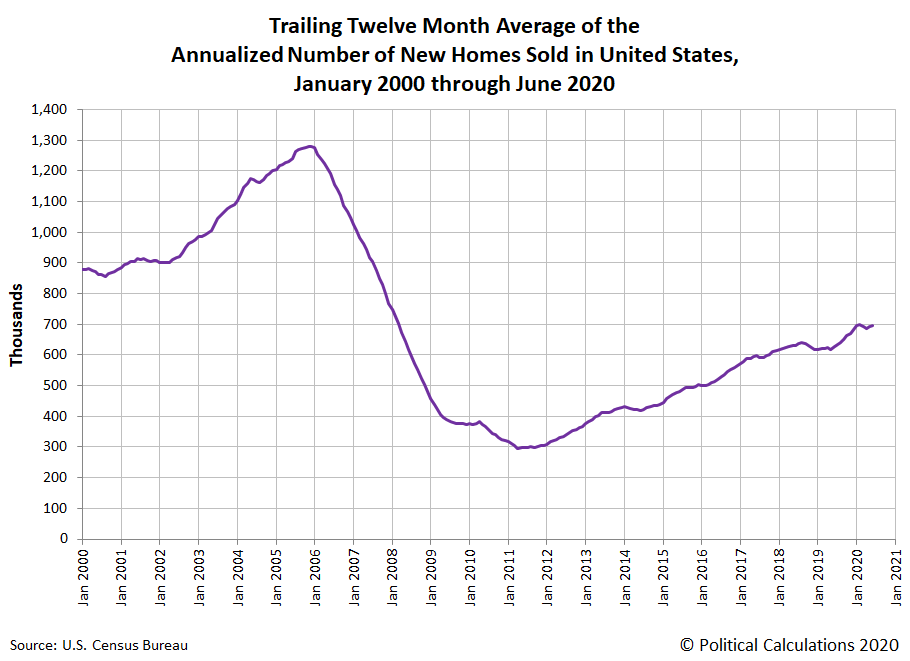New Home Sales A Bright Spot For U.S. Economy
The U.S. new home market continued to show surprising resiliency during June 2020.
That resiliency came despite the slowing recovery in the U.S., as several states began reintroducing measures to slow the spread of the SARS-CoV-2 coronavirus as they experienced a delayed first wave of infections.
Perhaps the most remarkable aspect of new home sales is that the number of sales has nearly returned to its pre-coronavirus peak in February 2020. The increase of new home sales back to this level in June 2020 can be easily seen in a chart tracking the trailing twelve month average of annualized new home sales recorded in the U.S. from January 2000 through June 2020.

At the same time, the average sale price of new homes in June 2020 rose to an initial estimate of $384,700, near the final estimate of $386,200 recorded for February 2020. The resulting combination of rising average sale price and rising number of sales produced an increase in the market capitalization of new homes sold in the United States for June 2020, which can be seen in the latest update to our chart following the actual and inflation-adjusted values of that data from January 1976 through June 2020.

The economic recovery data for July 2020 has turned downward with the surge of coronavirus infections in large portions of the U.S. that didn't experience a significant first wave. It will be interesting to see if the positive trend for new home sales continues for another month in the face of that adverse trend.
For the sake of closing on a positive note, Reuters provided the following description of the U.S. new home market in June 2020:
Sales of new U.S. single-family homes raced to a near 13-year high in June as the housing market outperforms the broader economy amid record low interest rates and migration from urban centers to lower-density areas because of the COVID-19 pandemic.
... the fundamentals for housing, which accounts for just over 3% of economy, remain favorable. The 30-year fixed mortgage rate is averaging 3.01%, close to a 49-year low, according to data from mortgage finance agency Freddie Mac. There are more first-time buyers in the market, with the average age 47 years....
In June, new home sales soared 89.7% in the Northeast and jumped 18% in the West. They increased 7.2% in the South, which accounts for the bulk of transactions, and advanced 10.5% in the Midwest. The median new house price increased 5.6% to $329,2000 in June from a year ago. New home sales last month were concentrated in the $200,000 to $400,000 price range.
The housing market looks like it will provide the U.S. economy in 2020 with something of a much needed tailwind.
References
U.S. Census Bureau. New Residential Sales Historical Data. Houses Sold. [Excel Spreadsheet]. Accessed 24 July 2020.
U.S. Census Bureau. New Residential Sales Historical Data. Median and Average Sale Price of Houses Sold. [Excel Spreadsheet]. Accessed 24 July 2020.
Disclaimer: Materials that are published by Political Calculations can provide visitors with free information and insights regarding the incentives created by the laws and policies described. ...
more


